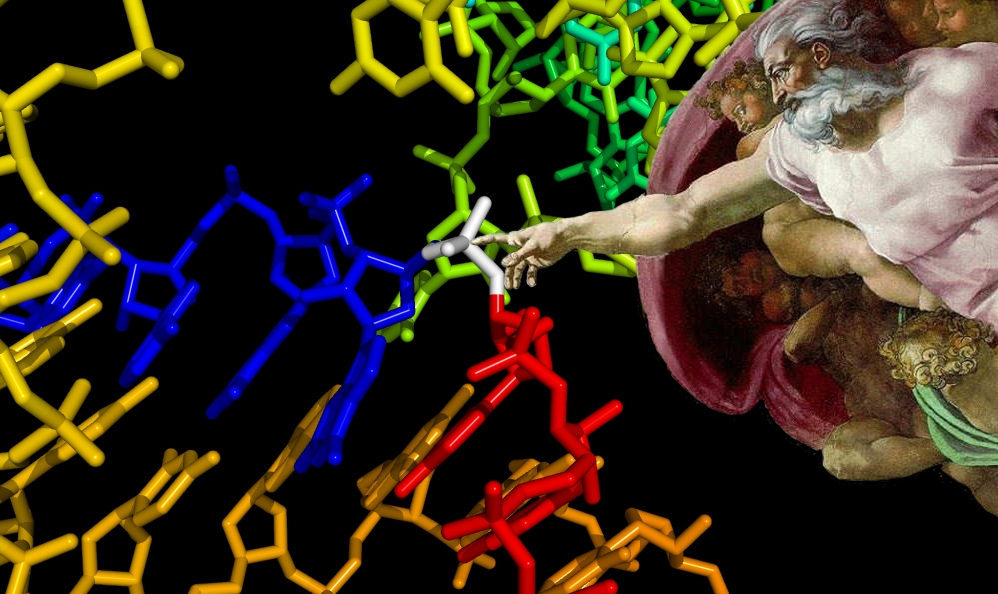Michael P. Robertson and William G. Scott
Copyright, 2007
Summary
Which came first, nucleic acids or proteins? This question is
molecular biology's version of the "chicken-or-the-egg" riddle.
Genes made of nucleic acids (DNA or RNA) contain the instructions
for making proteins, but enzymes made of proteins are needed to
replicate genes. For those who try to understand how life
originated, this once seemed an intractable paradox. With the
discovery of RNA catalysis, it is now possible to imagine a
prebiotic 'RNA World' (or even one populated by early life forms)
in which self-replicating ribozymes accomplished both
tasks.But there's a catch. In order to copy RNA, fragments or monomers that have 5'-triphosphates must be ligated together. This is true for modern polymerases, and is also the most likely mechanism by which a ribozyme self-replicase in an RNA World might function. Yet no one has found a modern natural ribozyme that can do this. RNA in vitro evolution and selection has however enabled several research groups to discover RNA sequences that can in fact catalyze the required chemical reaction for 5'-triphosphate RNA fragment ligation, and one group has even produced a functional RNA polymerase ribozyme. This provides a Proof of Principle that RNA is capable of such feats, and absent time travel, this is likely the best we will be able to do. Dr. Michael Robertson in vitro selected a ligase ribozyme during his Ph.D. with Dr. Andrew Ellington that regioselectively catalyzes a 5'-3' RNA ligation reaction. He called this the L1 ligase. To better understand the details of how this ribozyme folds into a structure that permits it to catalyze this fundamental reaction, he and I have solved the structure of a catalytically active variant of his original ribozyme, which we call L1X6c. The links on the right will allow you to examine the details of the structure in the context of the experimental electron density map. Links to a draft of the paper, the coordinates, data, and electron density maps saved as PyMOL saved sessions, as well as a browser-embedded Jmol display, provide a variety of ways for you to examine the structure. |
|
LinksThe following are links to various resources and downloads that you might find to be of use in understanding and evaluating the structure.The Paper
Coordinates and Fobs Data
Jmol interactive displayThis runs completely within your browser. All of the Jmol software resides on our server. Simply follow the link to our Jmol Ligase Ribozyme Display page and the rest is self-explanatory.PyMOL saved sessionsYou can download the PyMOL program for most computer platforms and then open any of the following PyMOL saved session files to view various aspects of the structure, including electron density maps. |
